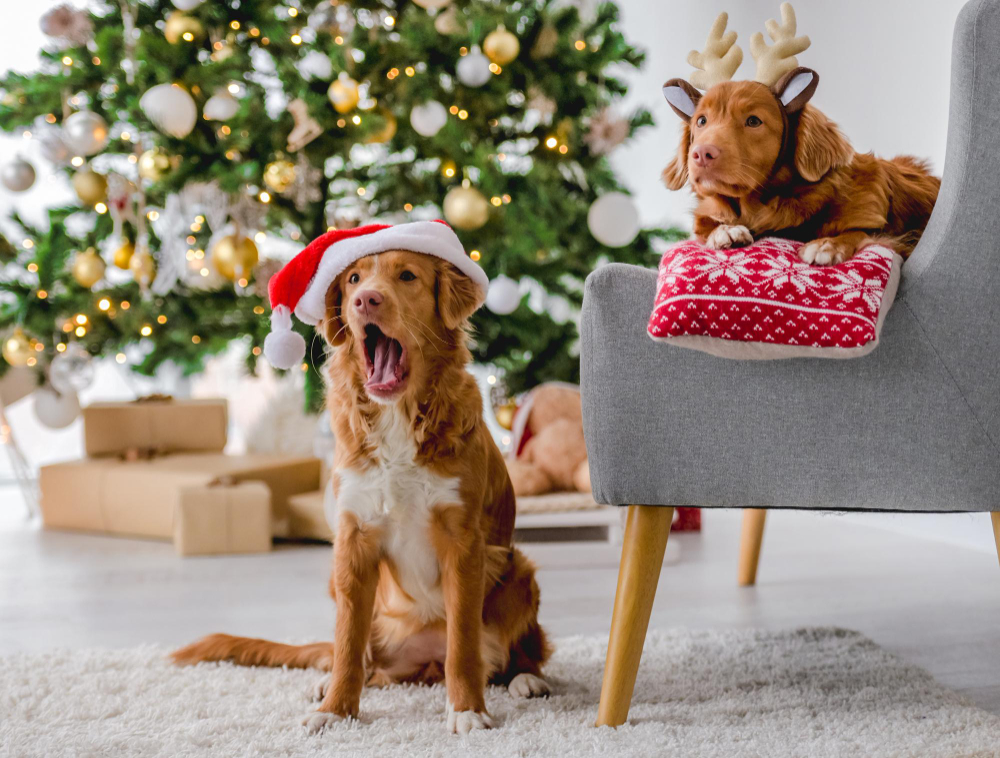As winter descends and the festive season approaches, households worldwide are brimming with anticipation. The joyous occasion of Christmas brings with it the excitement of decorating homes, organizing family gatherings, and indulging in the spirit of togetherness. However, amidst the merriment, it’s crucial to consider the comfort and safety of our furry family members. Pets, particularly dogs, may find the sudden influx of guests and change in routine stressful. This article aims to provide comprehensive advice on how to ensure a safe and enjoyable Christmas celebration for you, your family, and your beloved canine companions.
Ensuring a Pet-Friendly Festive Decor
The holiday season is synonymous with vibrant decorations, including garlands, Christmas lights, and festive figurines. While these embellishments might bring joy to humans, they can be overwhelming for pets. Animals are typically averse to drastic environmental changes, especially when these involve bright, flashing lights operating round the clock. Here are some considerations to bear in mind when decorating your home for the holidays.
Christmas Lights: A Delicate Balance
Christmas lights are a quintessential part of the holiday season. However, the constant brightness can disrupt your pet’s biological rhythm or circadian cycle, which is primarily guided by light exposure. Animals rely on natural and artificial light to orient themselves throughout the day, determining when to sleep and eat. Disrupting this rhythm can lead to stress, potentially causing appetite changes and digestive issues.
To mitigate the impact of Christmas lights on your pet, consider the following recommendations:
- Install lights on the exterior of the house.
- Avoid hanging lights at your pet’s eye level.
- Refrain from turning on lights after dark.
- Switch off the lights when you retire for the night.
- Keep the lights off when your pet is sleeping.
Decorations: Safety First
If you’re a fan of decking your halls with boughs of holly and other festive decorations, it’s essential to consider your pet’s safety. Decorative items, such as baubles and figurines, can pose a choking hazard if ingested by your pet. Here are some tips to ensure a safe environment:
- Keep decorations out of your pet’s reach. Dogs are often attracted to shiny objects like Christmas baubles. Ensure that these items, and the tree itself, are secure and out of your pet’s reach to prevent accidents.
- Be mindful of Christmas light wires. Ensure they are securely fastened and out of your pet’s way to prevent entanglement or potential chewing.
A Pet-Safe Christmas Feast
The Christmas dinner is a highlight of the holiday season. While it’s tempting to share your festive feast with your pet, it’s crucial to remember that not all human foods are safe for them. Even small portions can exceed a pet’s daily energy needs and contribute to obesity. Some foods can cause gastrointestinal issues, while others are outright toxic.
Instead of sharing your meal, consider offering dog-safe treats to your canine companion. However, avoid giving these treats while you’re at the table or cooking, as this can reinforce begging behavior.
Conclusion: A Merry and Safe Christmas for All
In the whirlwind of Christmas festivities, the safety and comfort of our pets can sometimes be overlooked. However, as responsible pet owners, it’s our duty to ensure that the holiday season is as enjoyable for our furry friends as it is for us. By taking into account the potential hazards of Christmas decorations and festive foods, we can create an environment that is not only filled with holiday cheer but also safe for our canine companions.
Remember, the essence of Christmas lies in love, care, and togetherness. Let’s extend these sentiments to all members of our family, including our pets. With a little bit of planning and consideration, we can ensure that the holiday season is a time of joy for everyone in the household.
Here’s wishing you, your family, and your beloved pets a Christmas filled with warmth, joy, and safety. Happy Holidays!

